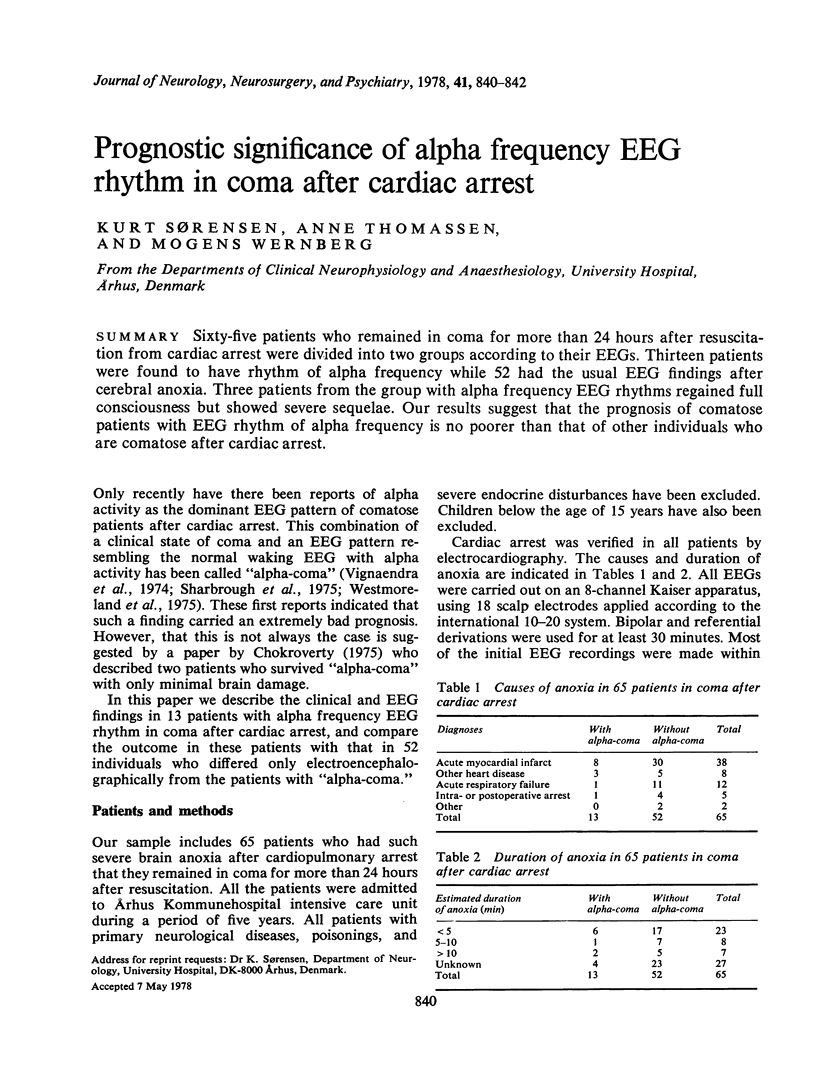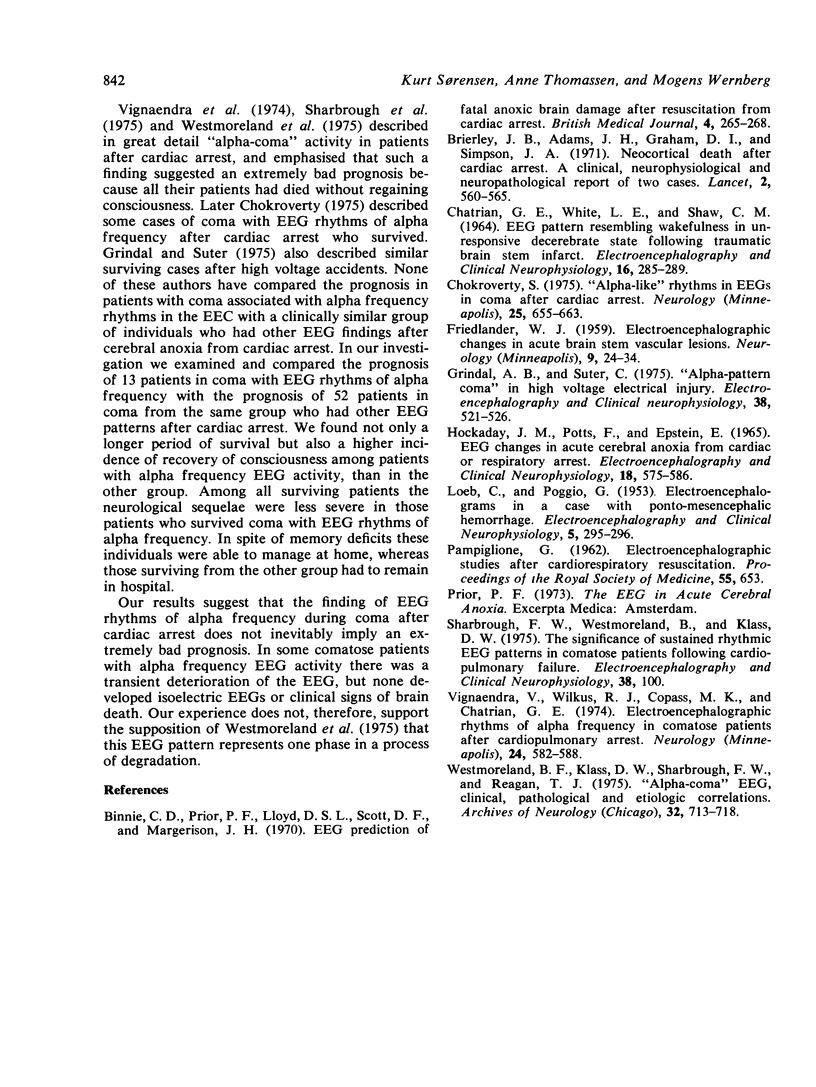Abstract
Sixty-five patients who remained in coma for more than 24 hours after resuscitation from cardiac arrest were divided into two groups according to their EEGs. Thirteen patients were found to have rhythm of alpha frequency while 52 had the usual EEG findings after cerebral anoxia. Three patients from the group with alpha frequency EEG rhythms regained full consciousness but showed severe sequelae. Our results suggest that the prognosis of comatose patients with EEG rhythm of alpha frequency is no poorer than that of other individuals who are comatose after cardiac arrest.
Full text
PDF


Selected References
These references are in PubMed. This may not be the complete list of references from this article.
- Binnie C. D., Prior P. F., Lloyd D. S., Scott D. F., Margerison J. H. Electroencephalographic prediction of fatal anoxic brain damage after resuscitation from cardiac arrest. Br Med J. 1970 Oct 31;4(5730):265–268. doi: 10.1136/bmj.4.5730.265. [DOI] [PMC free article] [PubMed] [Google Scholar]
- Brierley J. B., Graham D. I., Adams J. H., Simpsom J. A. Neocortical death after cardiac arrest. A clinical, neurophysiological, and neuropathological report of two cases. Lancet. 1971 Sep 11;2(7724):560–565. doi: 10.1016/s0140-6736(71)92148-9. [DOI] [PubMed] [Google Scholar]
- CHATRIAN G. E., WHITE L. E., Jr, SHAW C. M. EEG PATTERN RESEMBLING WAKEFULNESS IN UNRESPONSIVE DECEREBRATE STATE FOLLOWING TRAUMATIC BRAIN-STEM INFARCT. Electroencephalogr Clin Neurophysiol. 1964 Mar;16:285–289. doi: 10.1016/0013-4694(64)90111-7. [DOI] [PubMed] [Google Scholar]
- Chokroverty S. "Alpha-like" rhythms in electroencephalograms in coma after cariac arrest. Neurology. 1975 Jul;25(7):655–663. doi: 10.1212/wnl.25.7.655. [DOI] [PubMed] [Google Scholar]
- FRIEDLANDER W. J. Electroencephalographic changes in acute brain stem vascular lesions. Neurology. 1959 Jan;9(1):24–34. doi: 10.1212/wnl.9.1.24. [DOI] [PubMed] [Google Scholar]
- Grindal A. B., Suter C. "Alpha-pattern coma" in high voltage electrical injury. Electroencephalogr Clin Neurophysiol. 1975 May;38(5):521–526. doi: 10.1016/0013-4694(75)90193-5. [DOI] [PubMed] [Google Scholar]
- HOCKADAY J. M., POTTS F., EPSTEIN E., BONAZZI A., SCHWAB R. S. ELECTROENCEPHALOGRAPHIC CHANGES IN ACUTE CEREBRAL ANOXIA FROM CARDIAC OR RESPIRATORY ARREST. Electroencephalogr Clin Neurophysiol. 1965 May;18:575–586. doi: 10.1016/0013-4694(65)90075-1. [DOI] [PubMed] [Google Scholar]
- LOEB C., POGGIO G. Electroencephalograms in a case with ponto-mesencephalic haemorrhage. Electroencephalogr Clin Neurophysiol. 1953 May;5(2):295–296. doi: 10.1016/0013-4694(53)90017-0. [DOI] [PubMed] [Google Scholar]
- PAMPIGLIONE G. Electroencephalographic studies after cardiorespiratory resuscitation. Proc R Soc Med. 1962 Aug;55:653–657. [PMC free article] [PubMed] [Google Scholar]
- Vignaendra V., Wilkus R. J., Copass M. K., Chatrian G. E. Electroencephalographic rhythms of alpha frequency in comatose patients after cardiopulmonary arrest. Neurology. 1974 Jun;24(6):582–588. doi: 10.1212/wnl.24.6.582. [DOI] [PubMed] [Google Scholar]
- Westmoreland B. F., Klass D. W., Sharbrough F. W., Reagan T. J. Alpha-coma. Electroencephalographic, clinical, pathologic, and etiologic correlations. Arch Neurol. 1975 Nov;32(11):713–718. doi: 10.1001/archneur.1975.00490530035001. [DOI] [PubMed] [Google Scholar]


